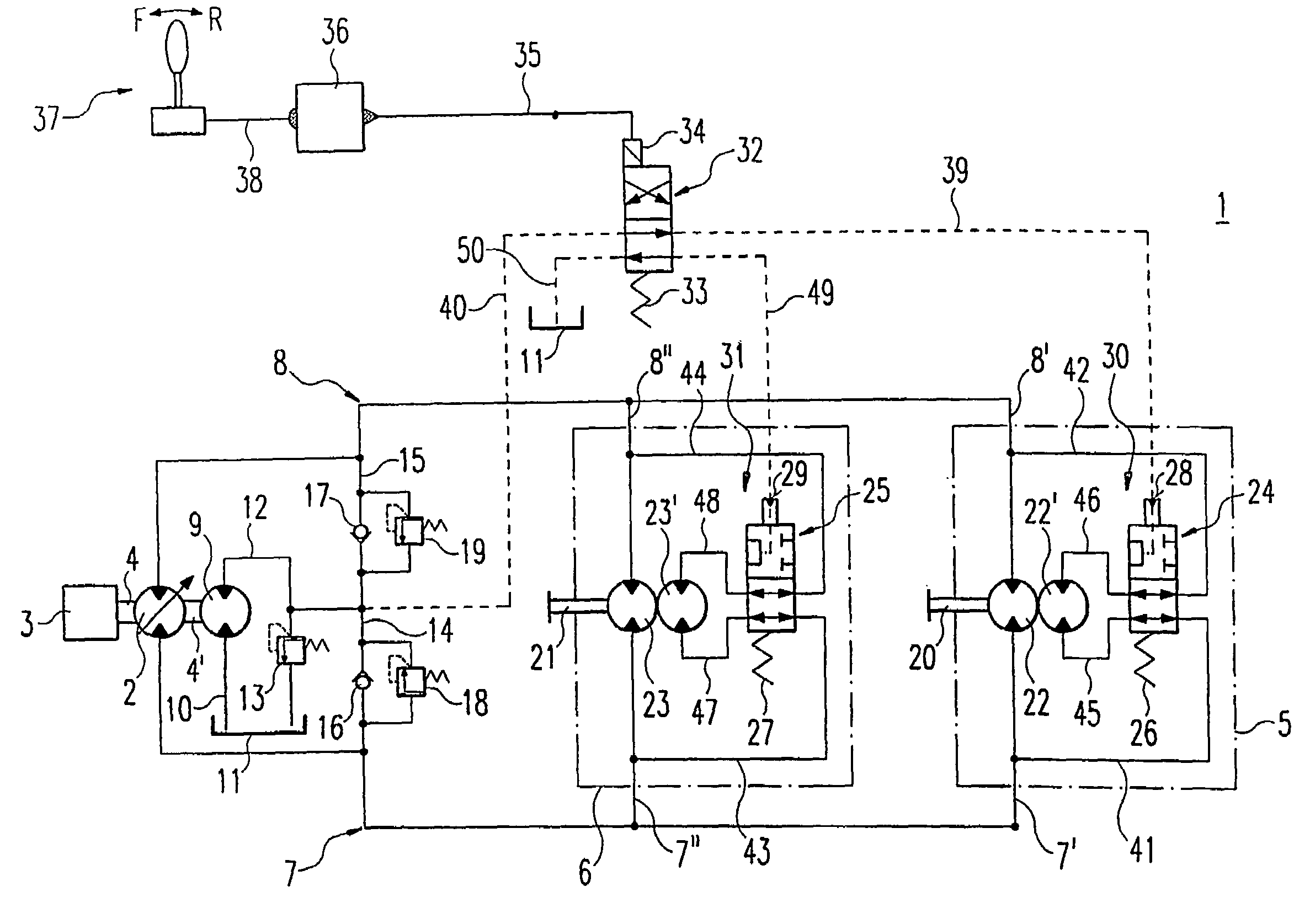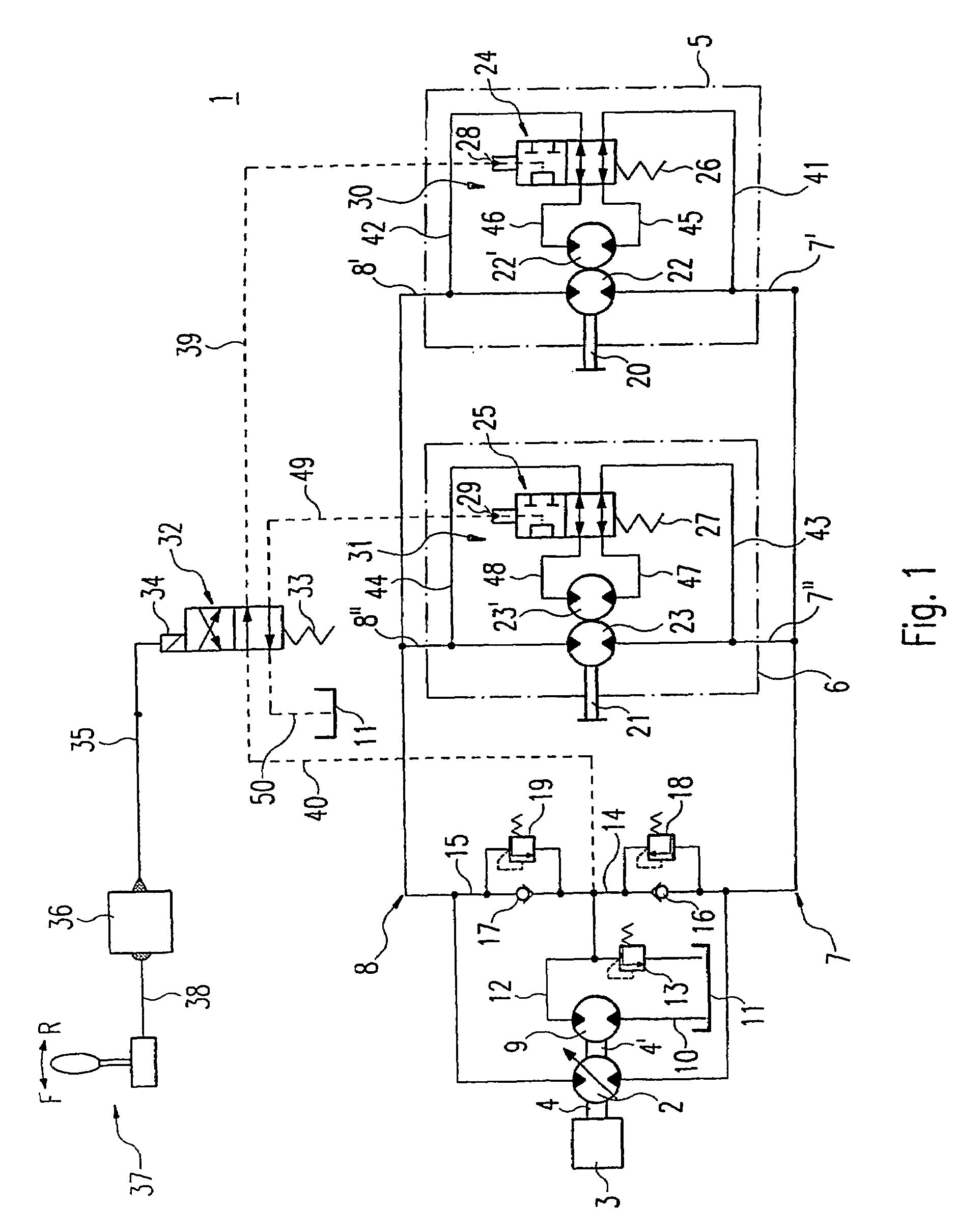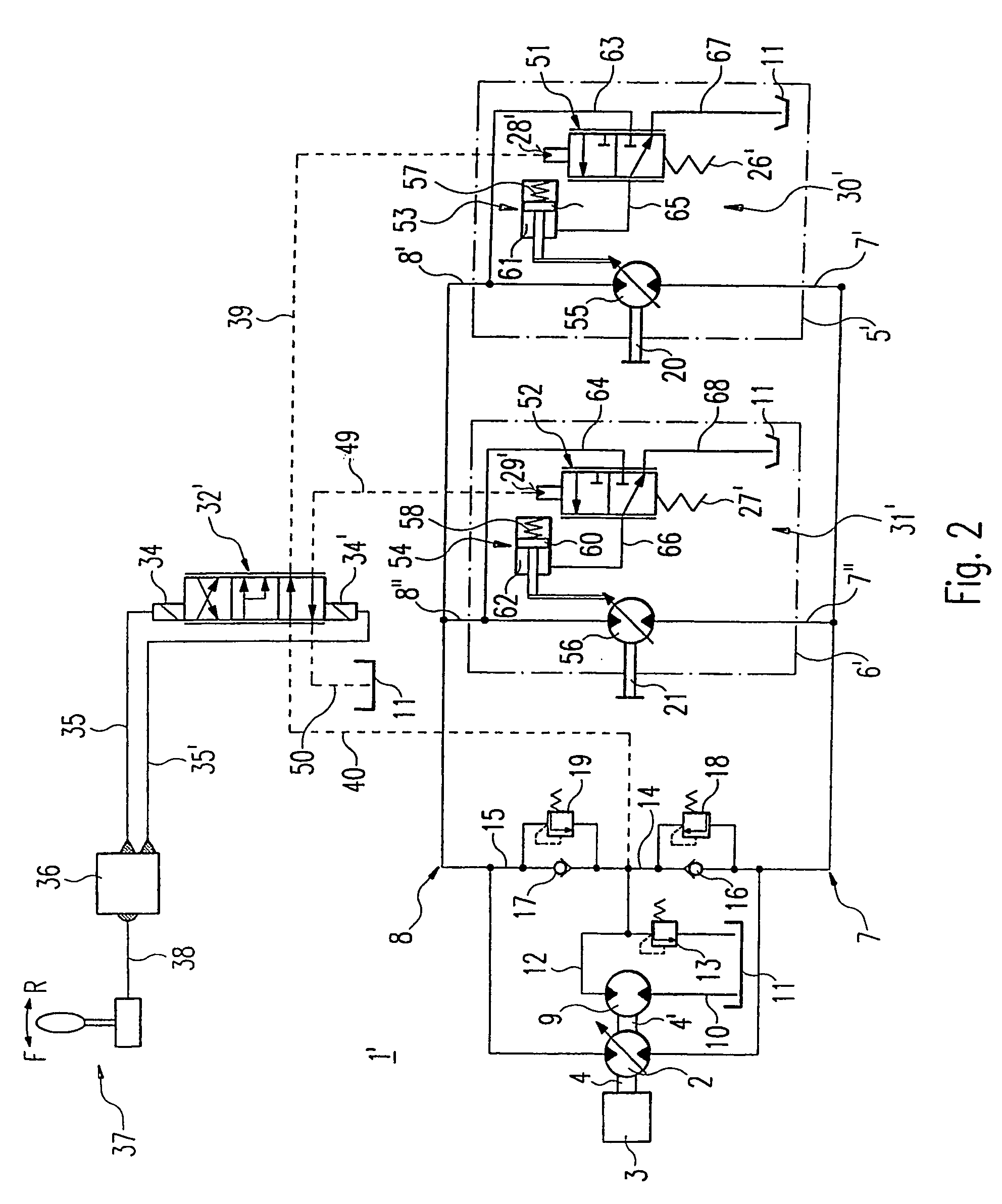Control for a hydrostatic power train
a technology of hydrostatic power train and control device, which is applied in the direction of gearing control, external condition input parameters, application, etc., can solve the problems of reducing the transmitted torque to one of the axles before a slippage on one of the axles, and affecting the operation of the control device. , to achieve the effect of constant absorption volume and high speed of motion
- Summary
- Abstract
- Description
- Claims
- Application Information
AI Technical Summary
Benefits of technology
Problems solved by technology
Method used
Image
Examples
first embodiment
[0024]a controller according to the invention for a hydrostatic traversing mechanism is shown in FIG. 1. A hydrostatic traversing mechanism 1 includes a pump 2, which is driven by a prime mover 3. The pump 2 is connected via a drive shaft 4 to the prime mover 3. The hydrostatic traversing mechanism also includes a first hydraulic motor unit 5 and a second hydraulic motor unit 6. The first hydraulic motor unit 5 and the second hydraulic motor unit 6 are connected in parallel via a first main duct 7 and a second main duct 8 to the pump 2. Depending on the delivery direction of the pump 2, the hydraulic fluid is fed from the first main duct 7 via a first connecting duct 7′ to the first hydraulic motor unit 5, and via a second connecting duct 7″ to the second hydraulic motor unit 6, or, in the case of delivery in the opposite direction, from the second main duct 8 via a third connecting duct 8′ to the first hydraulic motor unit 5, and via a fourth connecting duct 8″ to the second hydrau...
second embodiment
[0041]In FIG. 2, a controller according to the invention is shown. Identical components are given identical reference symbols. To avoid repetitions, reference is made to the description of FIG. 1.
[0042]In contrast to the first embodiment of FIG. 1, in the hydrostatic traversing mechanism according to FIG. 2 a first hydraulic motor unit 5′ and a second hydraulic motor unit 6′, which have a first hydraulic motor 55 and a second hydraulic motor 56 respectively, are provided. The absorption volume of the first and second hydraulic motor 55 and 56 is adjustable. For instance, machines in swash plate construction, in which the absorption volume is adjusted by adjusting the pivoting angle of the swash plate, can be used.
[0043]To adjust the absorption volume of the first hydraulic motor 55 or second hydraulic motor 56, a control valve 32′, which can take a first and a second switch position which are identical to the first and second switch position of the control valve 32 from FIG. 1, is p...
PUM
 Login to View More
Login to View More Abstract
Description
Claims
Application Information
 Login to View More
Login to View More - R&D
- Intellectual Property
- Life Sciences
- Materials
- Tech Scout
- Unparalleled Data Quality
- Higher Quality Content
- 60% Fewer Hallucinations
Browse by: Latest US Patents, China's latest patents, Technical Efficacy Thesaurus, Application Domain, Technology Topic, Popular Technical Reports.
© 2025 PatSnap. All rights reserved.Legal|Privacy policy|Modern Slavery Act Transparency Statement|Sitemap|About US| Contact US: help@patsnap.com



